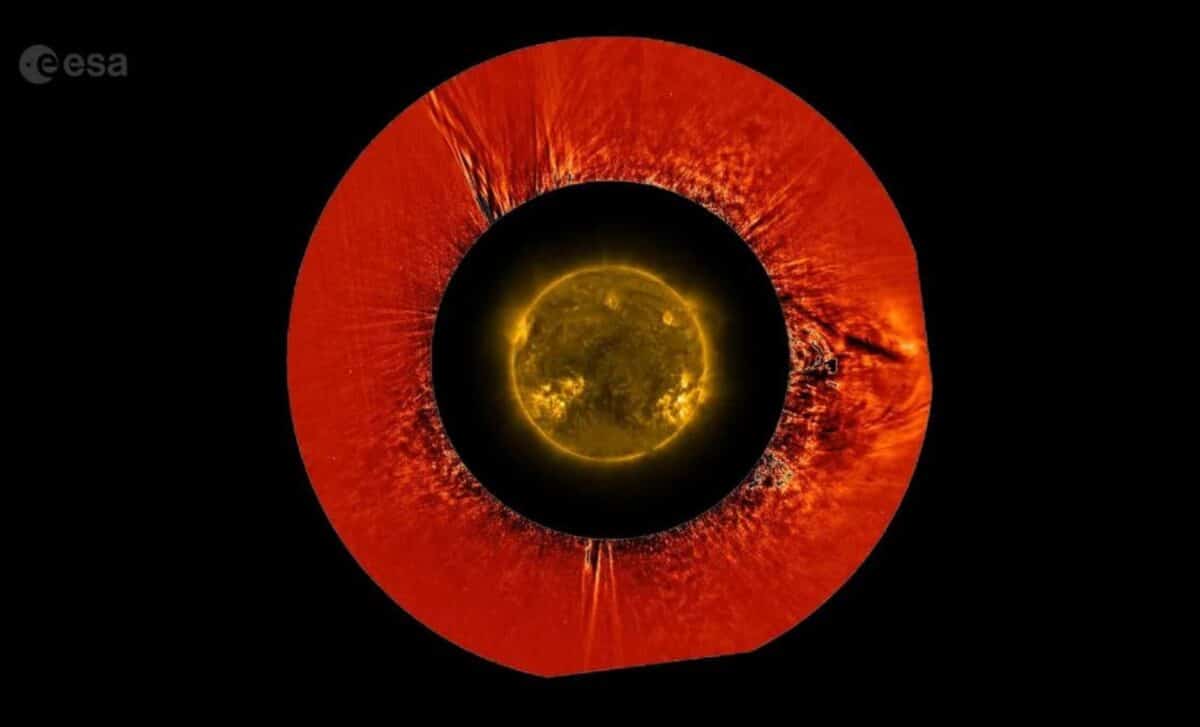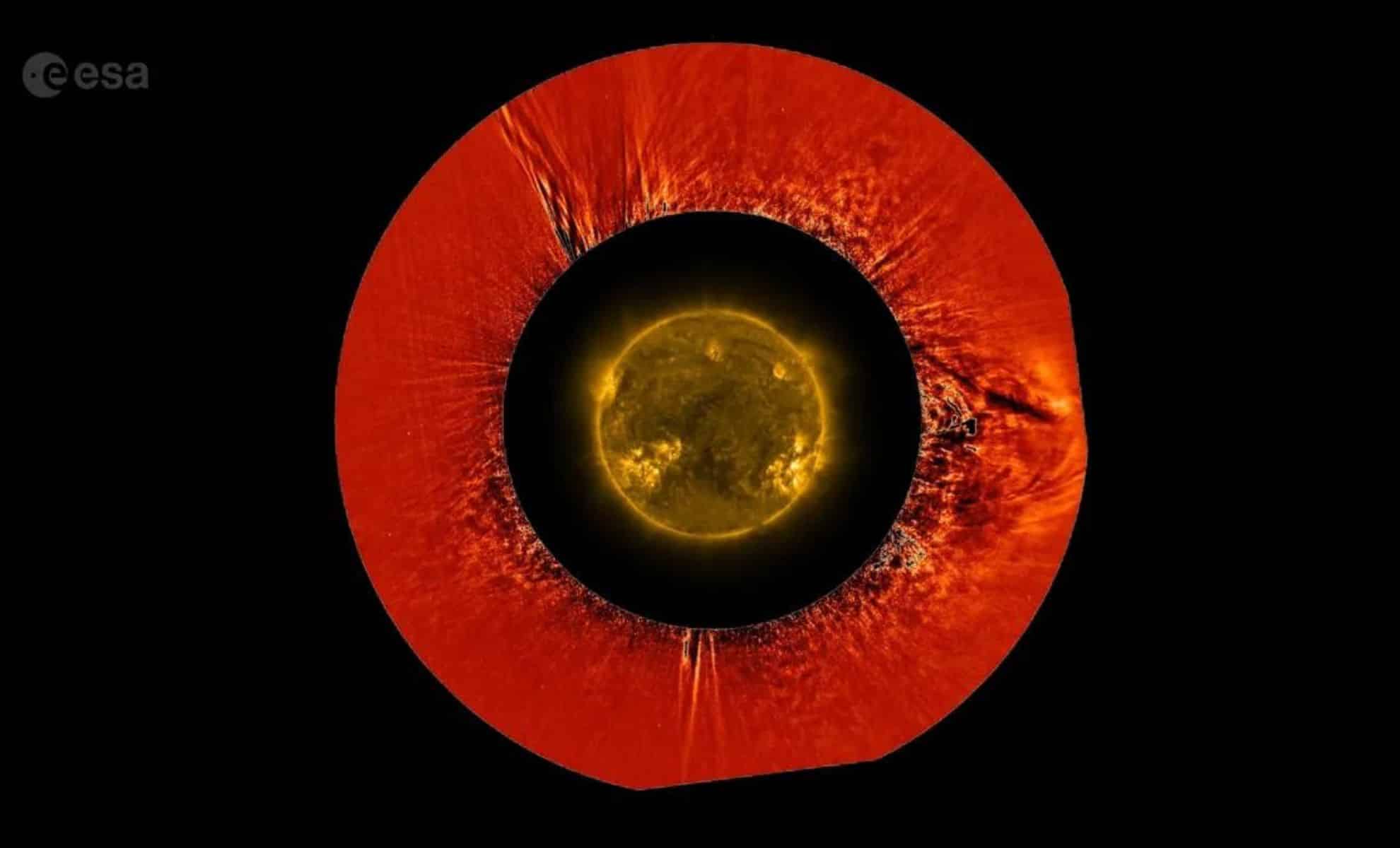In a stunning new discovery, ESA’s Solar Orbiter has captured the first-ever footage of fully developed turbulence in the Sun’s corona, offering unprecedented insights into the origins of the solar wind. This breakthrough could significantly improve space weather forecasting, vital for protecting Earth’s satellites and communication systems from geomagnetic storms.
Stunning New Footage Captures Turbulence in The Sun’s Corona

For the first time, scientists have directly observed fully developed turbulence in the Sun’s corona, providing critical insights into the behavior of the solar wind.
This landmark discovery, made by ESA’s Solar Orbiter, marks a significant step in understanding how the Sun’s chaotic magnetic field drives turbulent motion in the solar atmosphere. This turbulence, captured in stunning new footage, plays a vital role in shaping the solar wind that flows across the Solar System, affecting everything from planetary magnetic fields to satellite communications on Earth.
New Video Sheds Light on Solar Turbulence at The Sun’s Surface
A groundbreaking video released by ESA shows never-before-seen footage of turbulence swirling within the Sun’s corona. The data was collected by Solar Orbiter's Metis coronagraph on October 12, 2022, when the spacecraft was located just 43.4 million kilometers from the Sun, less than a third of the distance between Earth and the Sun. By using the coronagraph to block the intense light from the Sun’s disk, Metis was able to capture the faint visible and ultraviolet light emitted by the solar corona. This unprecedented level of detail offers a new window into how the solar wind originates.
The footage captures the chaotic movement of charged particles in the solar atmosphere, providing the first clear evidence that turbulence in the solar wind begins very close to the Sun itself. Daniel Müller, ESA’s Solar Orbiter Project Scientist, emphasized the significance of this discovery, stating, “This new analysis provides the first-ever evidence for the onset of fully developed turbulence in the Sun’s corona. Solar Orbiter’s Metis coronagraph was able to detect it very close to the Sun, closer than any spacecraft could approach the Sun and make local measurements.”
The Importance of Solar Wind Turbulence
Turbulence in the solar wind is far from an anomaly—it is a defining characteristic of the stream of charged particles that flows outward from the Sun, influencing planetary systems across the Solar System. The video reveals how this chaotic motion begins at the root of the solar wind within the Sun’s corona and expands as it moves through interplanetary space. This turbulent flow is critical to understanding how the solar wind behaves, as it affects both the heating and acceleration of particles.
The solar wind is constantly interacting with the magnetic fields of planets, including Earth, where it can create space weather phenomena that disrupt satellites, GPS signals, and even power grids. Understanding the underlying turbulence in the solar wind is key to improving space weather forecasting, which is crucial in our increasingly technology-dependent world. Dr. Alfredo Carpineti from IFLScience highlights the broader implications of this research, noting that “space weather affects satellites in a variety of ways. Communication, predictions, and remote sensing all depend on the instruments above our heads, and space weather can cause trouble up above and down on Earth.”
Unraveling Solar Mysteries with the Solar Orbiter Mission
The Solar Orbiter mission is uniquely positioned to explore these mysteries. Along with Metis, another key instrument, the Extreme Ultraviolet Imager (EUI), was used to capture images of the Sun’s surface during the same period. Together, these observations are revealing the structure and motion of the solar wind in real time. By pairing high-resolution images of the corona with ultraviolet data from the Sun’s surface, scientists can better understand the processes that drive solar wind turbulence.
As Solar Orbiter continues its mission, it is set to provide even more valuable data, especially as it shifts its orbital plane to view the Sun’s poles—a region that has never been observed in detail. These polar regions are critical to understanding how the Sun’s magnetic field is generated and how it controls the flow of charged particles throughout the Solar System.
The recent findings have been published in Astrophysical Journal Letters, and the research is expected to have far-reaching implications not only for space weather prediction but also for our broader understanding of solar physics.
Solar Wind Turbulence and Its Impact on Earth
The turbulence observed in the Sun’s corona is not just a scientific curiosity; it has direct consequences for Earth and other planets in the Solar System. As the solar wind interacts with planetary magnetic fields, it can generate geomagnetic storms that disrupt technology and communication systems on Earth. These storms, triggered by the fluctuating nature of solar wind turbulence, can have widespread impacts, making space weather forecasting an increasingly urgent priority.
By uncovering the chaotic origins of the solar wind, Solar Orbiter is providing the data needed to refine our understanding of space weather. The mission’s ability to capture the early stages of turbulence in the solar corona offers a unique opportunity to predict how these charged particles will behave as they travel through space and interact with Earth’s magnetic field. As Daniel Müller explains, “Understanding solar wind turbulence is crucial for predicting space weather and its effects on Earth.”



